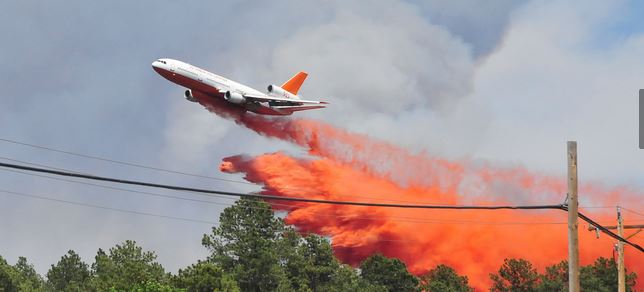
In case you have not been following the reports over at Fire Aviation closely, you may not be up to speed on what has happened in the last few months concerning air tanker contracts, so here is a quick summary.
Legacy air tankers
Exclusive use contracts for eight air tankers were announced by the U.S. Forest Service on March 27, 2013, saying that during the first year of the contract, 2013, Minden would have one P2V, and Neptune would have six P2Vs and one BAe-146. A few weeks later an additional BAe-146 from Neptune was quietly added, bringing the total to nine air tankers for the first year. If the USFS decides not to activate optional years in the contract, there could be as few as six legacy air tankers after 2013.
Next Generation air tankers
After many false starts, a contract protest by Neptune, and 555 days after the USFS issued the first solicitation, the USFS announced on June 7 that exclusive use contracts were going to be awarded for seven next generation air tankers.
- Minden Air Corporation; Minden, Nev., for 1 BAe-146
- Aero Air, LLC; Hillsboro, Ore., for 2 MD87s
- Aero Flite, Inc.; Kingman, Ariz., for 2 Avro RJ85s
- Coulson Aircrane (USA), Inc.; Portland, Ore., for 1 C130Q
- 10 Tanker Air Carrier, LLC; Adelanto, Calif., for 1 DC-10
Only one of these seven aircraft has both a Supplemental Type Certificate from the FAA and the approval of the Interagency AirTanker Board (IATB), and that is the Very Large Air Tanker, the DC-10, which has been busy since the award dropping on fires in California, New Mexico, and Colorado. The other six have a limited amount of time, a couple of months or so, to become fully certified in order to meet the Mandatory Availability Period in the contracts. It would be surprising if all six met the deadline, since some of them are still going through the retrofitting process, and then will begin the FAA and IATB reviews, with the latter being lengthy and expensive.
Very Large Air Tankers
Call when needed contracts were announced June 14 for two call when needed Very Large Air Tankers — a second DC-10 from 10 Tanker Air Carrier, and a 747 “Supertanker” from Evergreen. These three-year contracts start July 1, 2013. The second DC-10 already has a CWN contract expiring June 30, and was activated for fires in New Mexico June 14. The 747 has the required FAA and IATB approvals from earlier CWN contracts, so it should be ready to go on July 1 — unless a little thing like two missing engines could be a problem. We posted some photos and videos of the 747 doing some demo drops with water, as well as dropping on a fire in the United States and one in Mexico.
To summarize the summary:
- 9 legacy air tankers (seven 50- year old legacy, and 2 next-gen that are twenty-something years old)
- 7 next-gen air tankers (6 large and 1 very large)
- 2 very large air tankers on CWN
Totals by date in 2013, including CWN:
- Available now, June 17 — 11 total
- Expected beginning July 1 — 12 total
- If the additional 6 next-gen obtain approvals — 18 total
And yes, it’s confusing that two next-gen aircraft are included in the legacy contract, and a very large air tanker is mixed in with the next-gen. (I am almost surprised that a Single Engine Air Tanker is not clumped in with the Very Large Air Tankers.)

How old are the two DC-10’s?
CWN is a poor way to conduct fixed wing aviation business. Do you need them or don’t need them? There is NO guarantee the aircraft will be available and how quickly. On the flip side if the fixed wing aviation assests throughout the country where adequate (like 44 tankers) CWN would strengthen the fire managers position. CWN and helicopters has been around for decades. Why has this contracting method focused on fixed wing air tankers? Tankers usually don’t helimop, do construction, check power lines, spray crops. Next generation; there right about that, by the time we see the first air tanker (except for the DC 10) Christmas will have come and gone and fire season 2014 will have already started. (that is if everything goes as planned).